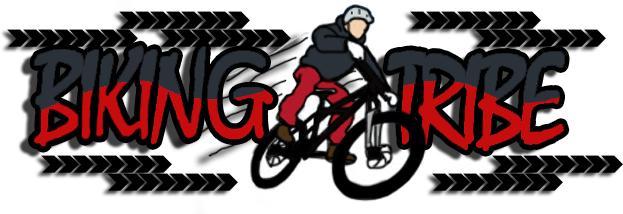- You are here:
- Home »
- Mountain Bikes
Category Archives for Mountain Bikes
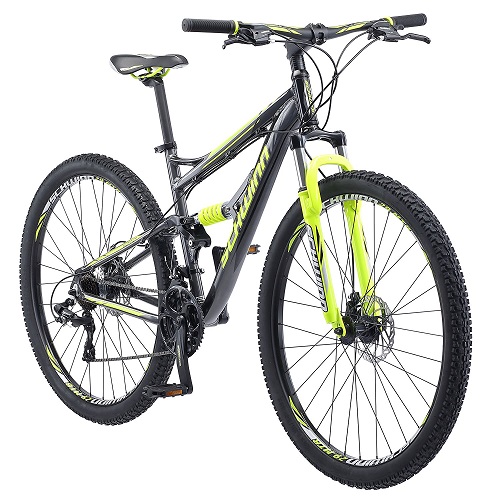
The Top 5 Best Schwinn Mountain Bike Reviews for 2017
The Schwinn Bicycle Company is one of the most iconic American bicycle manufacturing companies to ever grace the Earth. Founded in Chicago in 1895, it quickly became the leading manufacturer of American bicycles throughout the majority of the 20th century. And that was all thanks to German-born Ignaz Schwinn.
Schwinn was a mechanical engineer so when it came to building bicycles, he was a natural. The company’s produced various different models over the years including the famous Corvette and Sting-Ray models that were launched during the ‘50s and ‘60s. However, one type of Schwinn bicycle that’s remained popular since its release in the ‘70s is the good, old mountain bike.
Mountain bikes provide the rider with a comfortable, safe ride that’s great for almost any terrain. They’re good in rain, sand, and even snow. If you’re on the lookout for a decent bicycle, then Schwinn is one of the best places you could possibly go. Keep reading to find out what the top 5 best Schwinn Mountain Bikes of 2017 are:
1. Schwinn S29 Men’s 29” Wheel Full Suspension Mountain Bike
Price range: Mid

This mountain bike has an aluminum full suspension frame and 29” wheels giving you a much more solid ride. Performance and durability are enhanced with the S29, thanks to its top quality SR Suntour suspension fork and 3-piece crank. There are 21 speeds on this bike to choose from depending on your need. So, whether you need some extra grunt to get you up a tricky hill or a smoother ride to gain speed on your descent, you can be sure you’ll get it with this Schwinn mountain bike. It’s most suitable for riders 5’8” and above and is recommended for those aged 14 and over.
Verdict: I found the S29 to be quite a solid, good-looking mountain bike. However, it does have a few issues. The first is that at 37 lbs it’s quite heavy to maneuver and the second is that it’s not really built for off-road use. But, if you’re looking for a good on-road bike that looks cool and gives you a smooth ride, this is the bike for you.
Overall rating: 9/10
2. Schwinn Men’s High Timber 27.5” Wheel Mountain Bicycle
Price range: Low

If you’re looking for a decent all-around, budget mountain bike, the High Timber is the ride for you. Kitted out with Shimano twist shifters and front and rear alloy pull brakes you won’t be disappointed with the quality of this bike. Its 27.5” wheels are suitable for riding across all kinds of terrain while the Schwinn alloy crank offers optimal gearing for a much smoother journey. Assembly of this mountain bike isn’t particularly hard and will take around 15 minutes all together.
Verdict: For a mountain bike that’s of the lower end of the market price, it’s not too bad. Sure, the quality could be a little better, but for the price you're paying, it’s not too bad. It is fairly sturdy and robust and isn’t going to fall apart in five minutes—it’s just not as well-made as some of the company’s pricier models. It is probably more suited to a beginner at mountain biking opposed to a pro.
Overall rating: 8/10
3. Schwinn Bonafied 29” Wheel Mountain Bike
Price range: High

If you have a few extra dollars to spend, the Schwinn Bonafied is one model to seriously consider. This hardtail mountain bike has 24 speeds to give you even more control throughout your entire ride. Its double wall, high-profile rims are both lightweight and sturdy, providing you maximum durability. With 2.25 inch wide tires, this mountain bike is ideal for use on bumpy terrain. It also looks classy too with its color-matching rims and end plugs.
Verdict: This mountain bike is a very heavy bike, weighing in at 39 lbs altogether. However, it’s one of the best-made durable models out there. As with all Schwinn bikes, quality shines through and can be seen in spades in this outstanding model.
Overall rating: 10/10
4. Schwinn Traxion Mountain Bike 29” Wheels
Price range: High

Nothing will hold you back as you go hurtling through the rocky terrain with this full suspension mountain bike. The Schwinn Traxion Mountain Bike features a dual suspension, aluminum frame that offers durability all around. There is the 21-speed Shimano EZ-Fire trigger shifter and it’s fitted with Shimano alloy cranks and rear derailleur, so it oozes quality throughout. It’s got an extremely powerful Schwinn suspension fork in which to absorb some of those bumps from that tough terrain.
Verdict: What I like most about this Schwinn mountain bike is that it stands out in the crowd. It has bright, vibrant colors that look fantastic as you ride along. The frame’s durable, the brakes are good, and you get an overall good ride out of it. The only real thing that lets it down slightly is the price.
Overall rating: 9/10
5. Schwinn Protocol 1.0 Men’s Dual-Suspension Mountain Bike
Price range: Mid

For a mid-range mountain bike, the Schwinn Protocol measures up pretty well. The aluminum dual suspension frame is light and easy to move while its 24-speed Shimano EX-Fire trigger shifters allow for smooth shifting out on the trail. It’s also fitted with Promax front disc brakes and a rear alloy linear pull brake in which to keep you safe throughout your ride. This mountain bike looks the part too. With its bright red shine, you’ll be turning heads wherever you go with this beauty.
Verdict: Overall, it’s a pretty solid mountain bike that’s perfect for tackling the toughest of terrain. Assembly can be done in under 30 minutes and it rides really well. My only real issue is that the seat is really uncomfortable.
Overall rating: 8/10
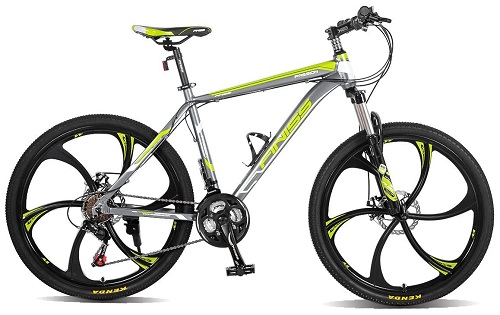
Downhill Mountain Bike Buying Guide
The first mountain bikes in the world were made by a bike enthusiast and racer named Joe Breeze. He made the first one in 1978. Now, the idea of the bike he started with has become much more specialized, with the frame, wheels, and suspension adapted to meet riders’ different goals. Breeze had a background in bike racing, and he came from Marin County, California. His first mountain bike was called the Breezer #1. This bike now lives in the Smithsonian, and the company is still in existence today, though he has since sold it.
Mountain bikes have certainly come a long way since the Breezer #1. They’re getting lighter, faster, and sturdier. People are taking advantage of technology and coming up with apps to help track your mileage, speed, and other riding stats. People are developing frames and suspension systems that Breeze may not even have dreamed of back in the 70’s. Some of the top athletes in the sport are helping companies come up with burlier and better bikes. More and more people are joining the sport, and kids are starting to mountain bike younger and younger. It’s an exciting time for biking. By joining a downhill community, you’ll be taking part in a sport that has evolved so much in a small amount of time. The people drawn to this sport are often adrenaline junkies, the kind of folks who like to go skydiving and bungee jumping. They don’t like to sit still. They’re rabid for the kind of energy that comes with zooming at high speeds down the side of a mountain on a downhill trail, or doing major jumps on a high speed cross country trail, or going off cliffs. They’re the Shane McConkey’s of the world. Downhill biking doesn’t always have to be a massive adrenalin rush, of course. You can just go for a mellow downhill ride without fearing for your life. It’s up to you. That’s what’s great about biking; the freedom you experience while doing it.
There are a few different kinds of mountain biking, and it’s good to have an idea of which ones you’d like to focus on so that you can buy a bike that will fit your specific needs. Dirt jumping, freeriding, enduro, trail riding, downhill biking, all mountain, hardtail…the list goes on. But one of our favorite styles of riding is downhill mountain biking. The adrenaline rush is unbelievable. It’s more addictive than those amazing cappuccinos with cocoa powder that your barista makes. You might have watched videos of World Cup races, or of young kids zooming off of jumps. Downhill biking is no doubt one of the coolest things you could do.
Downhill mountain biking is the sport of kings. And it doesn’t have to be incredibly expensive to get into. We’ve provided a handy guide so that you know what to look out for when you’re buying a downhill mountain bike, as these bikes can be quite different from all mountain or cross-country models. This isn’t a versatile bike. Four out of five mountain bikers would have absolutely no use for it. That’s because it’s made for fast and gnarly trails, the kind you wouldn’t take dad on. They usually have a good amount of suspension, and their breaks are of course super reactive, so you can stop or cut speed on a dime if you need to. Whether you want to use it for racing or you just want to cruise around while avoiding the annoying pedaling uphill, you have a lot of options.
You can ride this type of a bike off the tallest jumps you can find, while other bikes would defi-nitely end up wrecking and leaving you gasping on the ground. But the downside is that you won’t want to pedal them far. These bikes aren’t meant for anything but screaming downhill as fast as possible, so if you’d like to do some pedaling on your mountain bike, you might want to go for an all mountain or another type.
The most important part of any bike is its frame, and downhill bikes are of course no exception. Frames for these are often developed by World Cup racers or other high-profile, hard riding people. For the most part these generally have some carbon in them, to make them a little bit lighter. Others are still mostly aluminum, which can be a bit heavier but is also far sturdier.
One of our all-time favorite downhill bike brands is Nukeproof, and you can bet it’s true to its name. Some of the top World Cup racers, like Sam Hill, a World Series Enduro champion and Elliot Heap, use this brand, which hails from Belfast.
Other downhill bike models we like:
Diamondtrack

A consistently awesome performer, this bike is a favorite of many.
Beiou

We like this one because it’s one of the lightest bikes on the market.
Raleigh

This has an aluminum frame, and has incredible reach.
Merax

Tough, highly recommended by the pros, and with a cool rugged frame that folks love. It’s really, really fast, though some want a sleeker model.
For downhill mountain bikes, you’ll want to think about a few different factors.
The shocks. Coil springs, or the lighter air shocks? Do you know the difference between the two?
The brakes. Always an important part of downhill biking.
The wheels. For downhill tires, the traction is important. You’ll want some weight to them, and you’ll want to look for tires that are in the sweet spot in terms of size: from 2.35 to 2.5 inches. You can also decide what kind of pattern you want on the tread.
The price. Research is key to investing in a bike that fits both your budget and your needs.
The frame. The frame contributes to the overall stability of the bike, and can make a big difference in how much control you have while you’re riding down those steep hills and making those switchback turns.
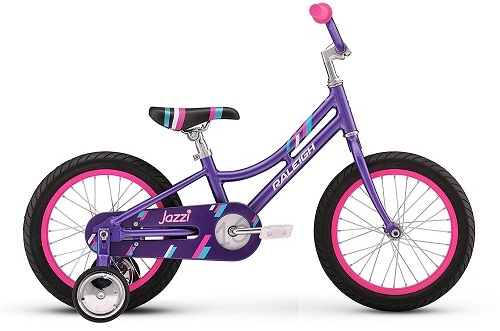
Safest Kids Mountain Bikes
Mountain biking can of course be quite a dangerous sport. Whether you’re an experienced biker or you’re brand new, young or old, really going for it during a race or just cruising around some tracks at Moab, there’s always the chance that you’ll have a fall in the wrong place, or that something will simply go wrong. We’ve known friends who’ve gotten compression fractures from casual downhill races, given themselves concussions out at Moab, and broken ribs. You get going pretty fast, and any wrong move could cause you to hit the ground. It can seem sometimes that all of your mountain biker friends are either training for races or injured. But this doesn’t mean your kids can’t get into the sport, does it? This is what makes biking so fun—the adrenaline rush. Making split-second decisions is good for the brain, and the grit and level of physical fitness it takes to get to the top of a hill can create a sense of discipline that lasts your kid for years to come. And there are ways to mitigate the risk, so that you and your children stay safe.
We’d recommend starting out with a safe children’s mountain bike. After all, your kid is going to bike somehow, whether you want him or her to or not. You may as well support them.
A lot of people want to buy a bike for their kid even though she’s growing like a weed, so they buy a big bike that the kid will grow into. This isn’t the best way to go when it comes to mountain bikes. For winter coats, maybe. But a mountain bike that’s too big makes it tough to reach the pedals and uncomfortable. Not to mention it makes the bike more dangerous for your kid to ride. Buy a good one that fits her (or his) size, and sell it once the kiddo grows out of it, or give it to the next youngest child.
Sometimes if you make a rash or unwise purchase, it works perfectly acceptably for a while and then politely breaks down. If you do a little homework, however, you’ll get much better results.
Here are a few of our favorite options for kids’ mountain bikes. These have been field tested and found up to the challenge of reliably transporting your young children up and down the peaks surrounding your home. We've kept in mind some important safety features like front suspension, rim brakes, wheel sizes, and hydration packs. Of course, the safety of the bike depends upon its rider, so we do recommend you sit down with your kids and try to at least give them a little information on the safe use of this bike, even if packs of boys and girls roaming around on two wheels will certainly undo at least some of this information. And this is great; when kids choose to bike outside of their comfort zones, they will grow as riders. A little guy trying to keep up with his older brother and his friends may get a few scraped knees, but will also get used to knowing how fast is too fast for him. He’ll become a better rider. Especially with suitable boys bikes. A nine-year-old girl following her older friends off a few of the smaller jumps at the bike park may end up with a broken arm, but she’ll also learn to assess for herself what’s within her limits and what’s not, and will be able to apply this information to future endeavors.
These options are the most stable, and they’re made specifically with kids’ bodies and measurements in mind. So without further edu, here are our favorite mountain bikes for kids.
1. Raleigh
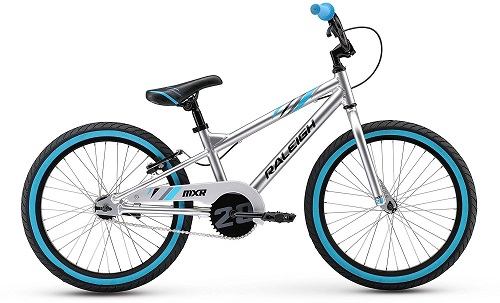
We love this brand of bikes, and think Raleigh is one of the best companies out there when it comes to crafting high-quality, durable, and affordable kids’ bikes.
2. Diamondback Bicycles Atroz Dual Suspension Mountain Bike
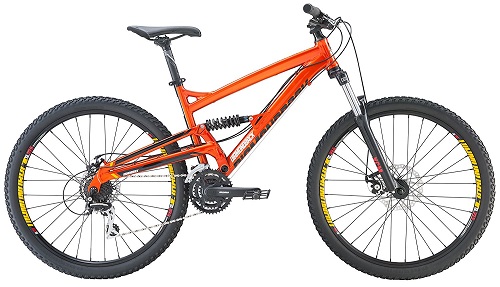
For its price, this bike is a great deal. The tires are solid, and it has 24 speeds to choose from. The frame is aluminum, and it weighs just under 45 pounds.
3. Kent Super 20 Boys Bike
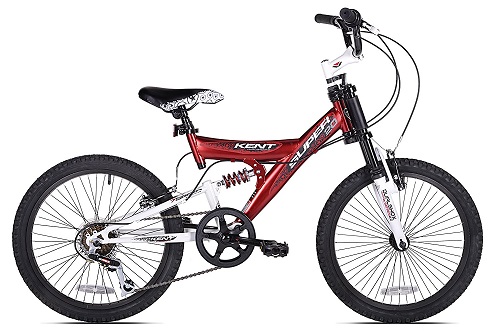
This bike has 20-inch wheels, 7 speeds, and dual suspension. It also has a convenient quick-release clamp for the seat. It’s a great choice for beginners, and it weighs a little less than the previous bike, 36 pounds.
4. Raleigh Girls Jazzi

We love Raleigh bikes; this model is a great option for the kids. Assembly is required, though they’ll do it for you for a fee. This model is great for those who want to ride hard on rocky trails. Users found that the parts were high quality and that it works great for both the more experienced and for beginners.
5. Roadmaster Granite Peak Boys Mountain Bike
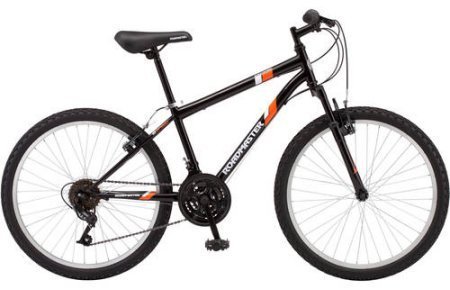
This bike is a great buy if you want something cheaper than the models we previously mentioned. Some assembly required. Users found it durable and a great option for the price, though some found the seat uncomfortable. We’d recommend purchasing a different seat and attaching it to the bike, if your child likes the bike otherwise.
We can’t emphasize enough that you should buy a bike that fits your child right now, rather than spending money on a larger bike that he or she will grow into. It’s easy enough to sell used mountain bikes once your child grows out of them. Biking will be a lot safer and more pleasant for your kids if they can reach the pedals properly, or comfortably stand at a traffic light without having to stretch their legs too much. Getting kids cycling while they're young is important. Remember how valuable the bike will be to your kids’ confidence as they get older, and how you’re teaching them to embrace a lifetime of heading outside for some exercise and fun.
Once you’ve bought the bike, sit down and talk with your children about how to bike safely, and what to pay attention to. They should be aware of the rules of the trails as well as the streets, so that they aren’t putting themselves or others in unnecessary danger. And make sure to be a good role model for them as well!
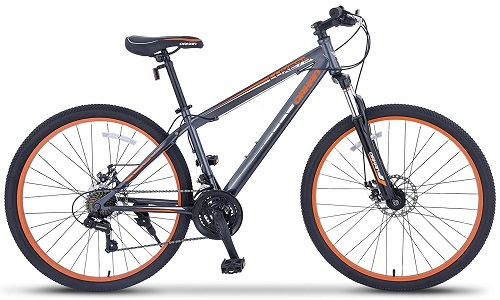
Best Budget Mountain Bike 2017
We all know people who have spent more on their road bikes or mountain bikes than on their cars. It’s not uncommon for people to name their bikes, and to treat them like cherished family members. But for those of us new to trudging up mountains for hours only to speed down them, unable to check out the scenery because it’s zooming by so fast, for those of us, in other words, who would like a taste of the sport without shelling out thousands of dollars…well, we’re looking for something a bit cheaper. Some find their first mountain bike for fifty bucks at a garage sale, while others shop around for weeks on craigslist and other sites until the perfect bike pops up, then meet up and exchange cash with a stranger on a bike we know next to nothing about (unless you bring a mountain biker friend along with you who knows her stuff). For most of us, though, we prefer to do a little research online to make sure we end up with the best budge mountain bike out there. In 2017, there were a lot of great (and some not-so-great) bikes.
Mountain biker culture is incredible, and buying your first bike can be a great way to enter into a community of great people. Often bike shops will run a weekly or bimonthly group ride that anyone can join, or will be a great source of maps and information on where to ride, simpler trails that are great if you are just starting out. You can also check facebook for mountain biking groups if you’re knew or if you simply want more folks to ride with.
Bad bikes are as common as sandflies in the Milford Sound. The internet is just crawling with them. Here are a few ideas to keep you on the straight and narrow when it comes to finding a bike, whether you’re dipping your toe into mountain biking, coming back after an injury, or upgrading from an outdated and outridden model.
A few considerations that you may want to consider before you invest in a mountain bike:
1. As always, you’ll want to keep your budget in mind. It can be easy to overspend when purchasing such a fun toy, but if you know your budget before you start looking, you’re more likely to invest in something that you can afford. It can be a lot of pressure riding something you broke the bank for; it’s much more relaxing going into a sport knowing what you’re riding is a good fit for both your needs and your wallet.
That said, if you could technically spend whatever you want on a mountain bike, the pricier models will help out your riding, in terms of comfort, and will have all the fun bells and whistles.
2. What size is best for you? Goes without saying; buy the right size for your height. Don’t know your size? Head to a bike shop, or do some research by plugging your weight and height into a handy site like this one. First, measure (you will want to take both shoes off, of course), the height from the ground to the crotch. This will give you an idea of how high you want your saddle to be. You’ll want a nice, comfy bend to your leg; not too much, however. If you do purchase a bike that’s the wrong size, there are some adjustments you can make, or you could buy a shorter or longer post for your seat.
3. What kind of suspension do you want? Will you be doing a lot of off-roading, or mostly on trails? Do you want full, or just hardtail, with suspension forks? Most often you’ll find mountain bikes that have full suspension, so that they absorb the ground as you ride over it with minimal jolting. Full-suspension mountain bikes also allow you to go off jumps and land smoothly, or to navigate more easily up bumpy uphill sections. Dual suspension and rear suspension are also things to talk to the expert at the bike shop about. A suspension bike is important for your ride.
4. How heavy do you want your bicycle? They’re coming out with lighter and lighter frames, which can be awesome for when you have to carry your bike through a muddy section, or when you’re hauling it on and off your car rack. An aluminum frame is a great option, but it can increase your price. Carbon fiber is the ultimate.
5. What kind of tires do you want on your bicycle? Some are more forgiving, with less traction, which are great for those just getting started as mountain bikers. Others with a lot more experience will want tires that react more precisely to their movements, for those technical, steep sections or for jumps, where you need a greater degree of control.
6. What wheel size will you need? Mountain bike wheels come in three sizes: 29 inch (these are biggest, allowing for easier rolling in rocky terrain, though they can be quite heavy), 27.5 inch (if you want to do a bunch of endurance riding or will be on trails a lot and want something a little bit lighter than the bulky 29ers, these are the choice for you) and 26 inch (though this is now less commonly used). Some people also used bigger wheels, for when they ride in mud and snow. Another note about the 29 inch tires: smaller riders may find they provide less control than they need.
7. Price. What’s your budget? Are you willing to invest a little more in something more suited to your needs, or are you looking for a way to explore the outdoors but don’t quite need all the bells and whistles? Safe equipment is important in this sport, so investing in suspension and brakes will improve your ride. Many of us got our first bikes for cheap at garage sales. Craigslist or similar sites can also be great ways to find bikes, or to sell our old ones once we’re ready to move on. If you're just starting out, maybe a hybrid bike is an option to look for, instead of the highest end hardtail mountain bike with full suspension.
In the end, the best mountain bike out there is of course the one that brings you the most happiness, and the one that inspires him or her to get outside. Some of our favorite brands are:
Kent

Takara

Orkan

